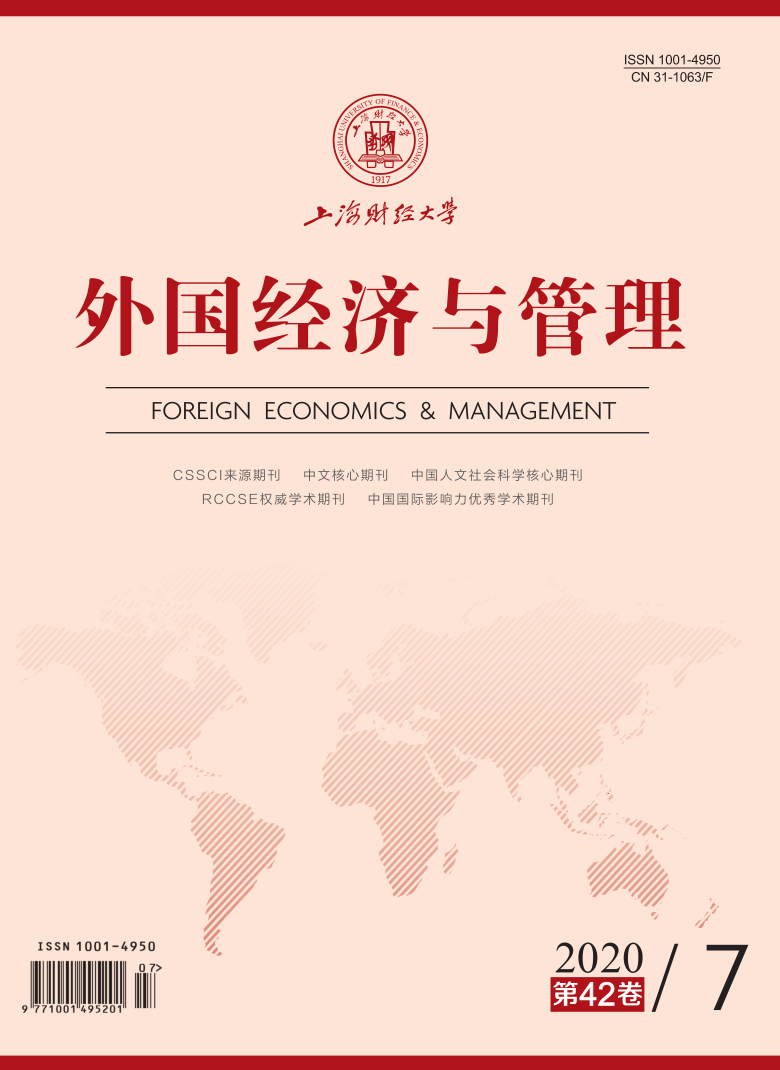[1] Liu D, Gao W. Research on the influence mechanism of customer participation on employees’ innovation willingness[J]. Chinese Journal of Management, 2019, 16(1): 96-103.
[2] Song K, Zhang Z, Zhao L. An analysis of the effect of time pressure at work on employees’ ambidextrous innovative behavior[J]. Business Management Journal, 2019, (5): 72-87.
[3] Zhang Y, Liu H, Wang M, et al. The impact of challenge stress and hindrance stress on employee creativity: The mediating role of self-efficacy and the moderating role of justice[J]. Acta Psychologica Sinica, 2018, 50(4): 450-461.
[4] Anderson N, Potočnik K, Zhou J. Innovation and creativity in organizations: A state-of-the-science review, prospective commentary, and guiding framework[J]. Journal of Management, 2014, 40(5): 1297-1333.
[5] Byron K, Peterson S J, Zhang Z, et al. Realizing challenges and guarding against threats: Interactive effects of regulatory focus and stress on performance[J]. Journal of Management, 2018, 44(8): 3011-3037.
[6] Cadwallader S, Jarvis C B, Bitner M J, et al. Frontline employee motivation to participate in service innovation implementation[J]. Journal of the Academy of Marketing Science, 2010, 38(2): 219-239.
[7] Cavanaugh M A, Boswell W R, Roehling M V, et al. An empirical examination of self-reported work stress among U.S. managers[J]. Journal of Applied Psychology, 2000, 85(1): 65-74.
[8] Chan K W, Yim C K, Lam S S K. Is customer participation in value creation a double-edged sword? Evidence from professional financial services across cultures[J]. Journal of Marketing, 2010, 74(3): 48-64.
[9] Chi K Y, Chan K W, Lam S S K. Do customers and employees enjoy service participation? Synergistic effects of self- and other-efficacy[J]. Journal of Marketing, 2012, 76(6): 121-140.
[10] Craciun G. Choice defaults and social consensus effects on online information sharing: The moderating role of regulatory focus[J]. Computers in Human Behavior, 2018, 88: 89-102.
[11] Fang E. Customer participation and the trade-off between new product innovativeness and speed to market[J]. Journal of Marketing, 2008, 72(4): 90-104.
[12] Fang E, Lee J, Yang Z. The timing of co-development alliances in new product development processes: Returns for upstream and downstream partners[J]. Journal of Marketing, 2015, 79(1): 64-82.
[13] Friedman R S, Förster J. The effects of promotion and prevention cues on creativity[J]. Journal of Personality and Social Psychology, 2001, 81(6): 1001-1013.
[14] Geng Z Z, Liu C, Liu X M, et al. The effects of emotional labor on frontline employee creativity[J]. International Journal of Contemporary Hospitality Management, 2014, 26(7): 1046-1064.
[15] Groth M, Hennig-Thurau T, Walsh G. Customer reactions to emotional labor: The roles of employee acting strategies and customer detection accuracy[J]. Academy of Management Journal, 2009, 52(5): 958-974.
[16] Higgins E T, Friedman R S, Harlow R E, et al. Achievement orientations from subjective histories of success: Promotion pride versus prevention pride[J]. European Journal of Social Psychology, 2001, 31(1): 3-23.
[17] Janssen O. How fairness perceptions make innovative behavior more or less stressful[J]. Journal of Organizational Behavior, 2004, 25(2): 201-215.
[18] Janssen O. The joint impact of perceived influence and supervisor supportiveness on employee innovative behaviour[J]. Journal of Occupational and Organizational Psychology, 2005, 78(4): 573-579.
[19] Joshi A W, Sharma S. Customer knowledge development: Antecedents and impact on new product performance[J]. Journal of Marketing, 2004, 68(4): 47-59.
[20] Karlsson J, Skålén P. Exploring front-line employee contributions to service innovation[J]. European Journal of Marketing, 2015, 49(9-10): 1346-1365.
[21] Kim E, Yoon D J. Why does service with a smile make employees happy? A social interaction model[J]. Journal of Applied Psychology, 2012, 97(5): 1059-1067.
[22] Lanaj K, Chang C H, Johnson R E. Regulatory focus and work-related outcomes: A review and meta-analysis[J]. Psychological Bulletin, 2012, 138(5): 998-1034.
[23] Lazarus R S, Folkman S. Stress, appraisal, and coping[M]. New York: Springer, 1984.
[24] LePine J A, LePine M A, Jackson C L. Challenge and hindrance stress: Relationships with exhaustion, motivation to learn, and learning performance[J]. Journal of Applied Psychology, 2004, 89(5): 883-891.
[25] Li M L, Hsu C. Customer participation in services and its effect on employee innovative behavior[J]. Journal of Hospitality Marketing & Management, 2017, 26(2): 164-185.
[26] Li M L, Hsu C. Customer participation in services and employee innovative behavior: The mediating role of interpersonal trust[J]. International Journal of Contemporary Hospitality Management, 2018, 30(4): 2112-2131.
[27] Madjar N, Greenberg E, Chen Z. Factors for radical creativity, incremental creativity, and routine, noncreative performance[J]. Journal of Applied Psychology, 2011, 96(4): 730-743.
[28] Mawritz M B, Folger R, Latham G P. Supervisors’ exceedingly difficult goals and abusive supervision: The mediating effects of hindrance stress, anger, and anxiety[J]. Journal of Organizational Behavior, 2014, 35(3): 358-372.
[29] Sacramento C A, Fay D, West M A. Workplace duties or opportunities? Challenge stressors, regulatory focus, and creativity[J]. Organizational Behavior and Human Decision Processes, 2013, 121(2): 141-157.
[30] Singh J. Striking a balance in boundary-spanning positions: An investigation of some unconventional influences of role stressors and job characteristics on job outcomes of salespeople[J]. Journal of Marketing, 1998, 62(3): 69-86.
[31] Skinner N, Brewer N. The dynamics of threat and challenge appraisals prior to stressful achievement events[J]. Journal of Personality and Social Psychology, 2002, 83(3): 678-692.
[32] Webster J R, Beehr T A, Love K. Extending the challenge-hindrance model of occupational stress: The role of appraisal[J]. Journal of Vocational Behavior, 2011, 79(2): 505-516.
[33] Zhang Y W, LePine J A, Buckman B R, et al. It’s not fair ... Or is it? The role of justice and leadership in explaining work stressor-job performance relationships[J]. Academy of Management Journal, 2014, 57(3): 675-697.






 11157
11157  9353
9353

